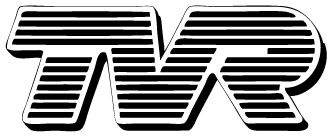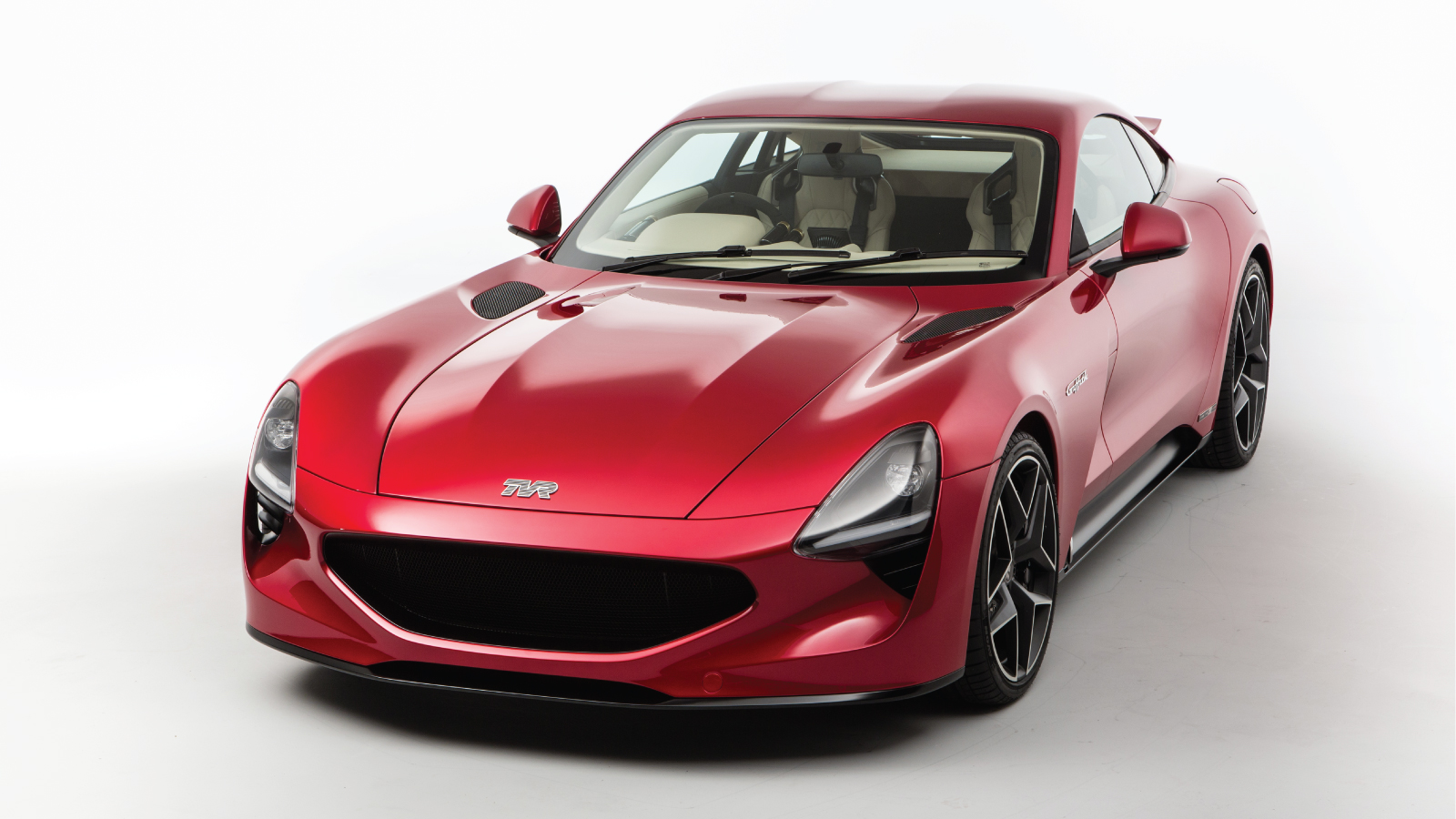
TVR Electric Vehicles Ltd formerly TVR Automotive is a British manufacturer of sports cars. The company manufactures lightweight sports cars with powerful engines and was, at one time, the third-largest specialised sports car manufacturer in the world, offering a diverse range of coupés and convertibles. TVR Electric Vehicles Ltd is a private company limited by shares incorporated in England and Wales. The company’s principle activity is the manufacturing of luxury automobiles. In 2022, the company changed its name from TVR manufacturing Limited to TVR Electric Vehicles Limited.
| Categories |
| TVR Archive 3 (2023-2015) TVR Archive 2 (2014-2000) TVR Archive 1 (1999-1956) |
| Websites |
| tvr.co.uk |
TVR Electric Vehicles Ltd
Griffith House, Walliswood,
Walliswood, Surrey RH5 5RD, GB
The TVR group has designed a new luxury sports car names the Griffith, for production and assembly at the factory production facility in Ebbw Vale, Wales. The all-new TVR Griffith, A two seat coupe/convertible features a 5.0 litre Ford V8 powerplant with a 6-Speed manual gearbox that collectively are designed to deliver a class leading 400 bhp per tonne power-to-weight ratio.

TVR HISTORY
TVR is an independent British sports car manufacturer established in 1947 by Trevor Wilkinson. The business established itself as a leading light in the British low-volume sports car market, building an international reputation for high-performance vehicles and innovative design with powerful engines and was, at one time, the third-largest specialised sports car manufacturer in the world, offering a diverse range of coupés and convertibles.
The abbreviation TVR stems from the name of the company’s owner Trevor Wilkinson, his first garage was sporting the letters T V and R. The birth of the brand took place in Blackpool, in an old wheelwrights’ workshop when Trevor Wilkinson established Trevcar Motors to undertake general engineering work, which in turn evolved into TVR Engineering.
In 1949 the first TVR chassis was made with a live rear axle from a Morris Eight with independent trailing arm front suspension. Using an old 1,172 cc Ford side valve engine with 35 hp, the body was made in aluminium and painted in British Racing Green. TVR Number One no longer exists as within a year it was crashed and broken for parts.
In 1953 Wilkinson and his business partner Jack Pickard designed the TVR Sports Saloon utilising the components from an Austin A40, to be supplied to customers in kit form. Different body styles and engines were used and no two Sports Saloons were the same.
In 1955 a semi spaceframe chassis was designed, providing a lower seating position and all round independent suspension. In 1956 the first TVR arrived in the United States and was fitted with a Coventry Climax FWA engine and aluminium body.
The TVR Open Sports and TVR Coupe followed on but after a suggestion from Ray Saidel, who was racing and trying to sell the cars in the United States, a fast back design was introduced in 1958, and this eventually became known as the Grantura.
However, with financial difficulties being experienced, and relationships fracturing, new management, new investors and new approaches were added to the TVR script. In 1960 the controlling interest had passed from Trevor Wilkinson to Keith Aitchison and Bryan Hopton, who managed to increase the order book and who took up an interest in international motorsport with the TVR brand.
Trevor Wilkinson’s concept of a light body on a tubular chassis, front engine, rear wheel drive, with close attention paid to increase performance, created TVR’s DNA which is still adhered to to this day.
An education in engineering led to the assembling of Lotus Elan kits to order in the early 1960’s, but it was a visit to a TVR dealership that introduced Martin Lilley to TVRs. Subsequently he bought a Griffith 400 for racing purposes. Having damaged the car enough to require it to be returned to the factory for repairs, and his father Arthur Lilley having just acquired some shares in Grantura Engineering, the company then promptly went into liquidation! Deciding not to just give up on the car, or the investment, Martin Lilley and his father acquired the remnants of Grantura Engineering in November 1965, renamed it TVR Engineering, and within three difficult years had turned the business back into a profit making company.
After two years of declining production numbers for the existing range, the Vixen was launched in 1967 to sit beside the Tuscan V8, which had been developed to replace the Griffith.
In late 1970 the move from Hoo Hill to Bristol Avenue took place, and the extra space was much needed as output had now risen to between five and eight cars per week. To create publicity for the company, nude models posed on the TVR stands at the 1970 and 1971 British International Motor Show at Earls Court, creating quite a commotion!
Following the Vixen series of cars, TVR launched the M series in 1972, which in turn led to the Taimar and S series. In early 1975 a fire at the factory seriously disrupted production and whilst the dedicated TVR staff did their utmost to restore production, this fire affected factory output considerably.
With a dramatic change in styling the Tasmin was launched in 1980 to mixed reviews and disappointing sales.
American exports had been playing an important role in the finances of TVR for many years but with costs rising, increasing emission controls and a recession in the UK, Martin Lillley found TVR back in financial trouble, and so in late 1981 he sold control of the company to Peter Wheeler.
A chemical engineer and businessman, achieving success from supplying the oil industry, Peter Wheeler was also a TVR Taimar Turbo owner. Having a good relationship with the factory, when TVR found itself in financial trouble, Peter Wheeler was able to buy control from Martin Lilley.
Inheriting the radical Tasmin design the next step was to shoe horn the Rover V8 in and this move turned the Tasmin into the successful 350i, with many variants of Wedges, as these cars become known, to follow. Realising that the curves were missing from the TVR range, the S Series was born with clear design links back to the M Series but with hardly any components carried across. The S Series was a success and sold well.
Resurrecting the Tuscan name, TVR now launched an exciting one-make race series, in which Peter Wheeler actively took part.
In 1990 another resurrected name was seen on a TVR, being the Griffith, often considered one of Peter Wheeler’s best designs. Within a year the Chimaera followed and soon became TVRs best seller. The Rover V8s used in the Griffith and Chimaeras, initially with a capacity of 4.0 litres, eventually reached a capacity of 5.0 litres providing phenomenal performance.
Following the success of the Chimaera, came the Cerbera, but for this car Peter Wheeler took the bold step of using a TVR designed engine, the AJP V8. For the Speed 12 car, the AJP V8 was pulled out to a V12 configuration, and subsequently one bank of this was used to create the Speed Six engine. With the Speed Six engine, Peter Wheeler’s TVR then let loose the Tuscan (resurrecting the name for the third time!) to replace the Griffith, the Tamora to replace the Chimaera, followed in 2003 by the T350C and T350T. The T350C was then developed into the Sagaris, a true bedroom wall poster car if ever there was!
In Peter Wheeler’s hand TVR had produced a large variety of iconic cars that are as popular today as when they were first built, but after 22 years at the helm, the company was sold to Nicolai Smolenski.
Buying TVR in 2004, the young Nicolai Smolenski had high hopes for taking TVR further onto the world automotive stage.
Building on the successes of Peter Wheeler, he set about on improving the quality and reliability of the cars leaving Blackpool. He announced plans to relocate the manufacturing centre to new premises locally and brought in the engineering company Ricardo in an effort to make the Speed Six engine Euro 5 compliant.
Events were not easy for the young Russian and his plans changed with rumours of production moving overseas. With sales of cars falling, Nicolai subsequently broke the company up into component parts.
Even with difficulties all around, TVR was able to announce the next model would be a 600 bhp supercar called the Typhoon, to be launched in 2007, but in late December 2006 it was announced that TVR had gone into receivership. Nicolai was able to buy back the company from the receivers, and whilst he made another attempt to keep TVR going with a reveal of the Sagaris 2 in 2008, nothing further happened.
Whilst history will show that Nicolai Smolenski was ultimately unsuccessful with TVR, he always had a true passion for the brand and for the sports cars TVR made.
In April 2013, Les Edgar was able to lead a consortium of investors to buy the brand, intellectual property and all remaining assets of TVR and bring ownership of the much loved sports car manufacturer back to the UK under the corporate umbrella of TVR Automotive Ltd. The announcement of the acquisition was made to the world on 6th June 2013, coinciding with the 5th Anniversary of the passing of Trevor Wilkinson (1923-2008).
Les Edgar’s previous success had come through computer gaming but his passion for all things automotive had also led him to take Aston Martin back to the 24 Hours of Le Mans, a race which Les is very passionate about and in which he has ambition for TVR to participate in once again.
Initially concentrating on setting up a support network for the existing cars and owners, leading to the formation of the Heritage Network and the creation of TVR Parts, TVR then turned to the future.
Knowing that to succeed, TVR had to take a big step in technology and design principles, but yet stick true to the core TVR DNA, they turned to the legendary F1 engineer Gordon Murray, and to legendary engine builders Cosworth.
Resisting the urge to rush a new car to the market, TVR, and their partners, have worked quietly, but tirelessly, to bring the new launch edition TVR, code named T37, to be revealed to the world at the Goodwood Revival in 2017. Based on Gordon Murray Design’s iStream Carbon technology, the use of a tubular chassis, albeit with bonded carbon paneling, lightweight bodyshell, front engine and rear wheel drive links directly back to Trevor Wilkinson’s first concepts.
The latest TVR to be hitting the roads from 2018 onwards will be, as the TVR Car Club announced, “Unapologetic, loud, proud and British built”.
In November 2021 TVR announced a joint venture with Ensorcia Metals a green lithium mining company to both fund production on the Griffith and ensure the supply chain for TVR’s future battery requirements. In April 2022, TVR announced that a multi-million pound investment by Ensorcia had taken place and it was further announced TVR would become a sponsor for the Formula E rounds at Monaco and London to promote the forthcoming second generation of the all-new TVR Griffith,
Les Edgar is an entrepreneur, known for being the co-founder and joint managing director of Bullfrog Productions (video game developer), which he set up with Peter Molyneux. After Bullfrog’s acquisition by Electronic Arts in 1995, Edgar became a vice president there. Edgar left Bullfrog in 1999, and eventually left the video gaming industry for the automotive industry, where he reintroduced Aston Martin to racing, and became chairman of TVR, which has, under his leadership, set up partnerships with Gordon Murray and Cosworth. Edgar has stated that he intends to return TVR to Le Mans 24 Hours.

